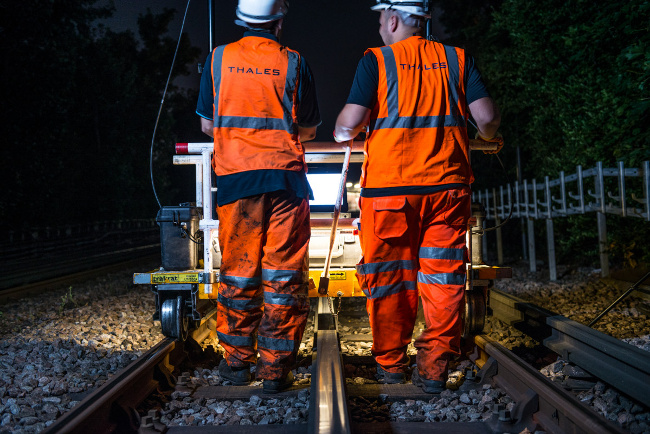May 27, 2016 - In 1863, an underground railway between Paddington and Farringdon was opened.
Dubbed the 'Metropolitan Line,' this revolutionary service allowed steam trains to haul nearly 40,000 passengers in gas-lit wooden carriages, between eight stations. It was the start of something extraordinary.
Today, the London Underground encompasses 402 kilometres of track, serving 270 stations and 11 lines. In 1982, it carried 498 million passengers. In 2015 that figure was 1.34 billion. And demand is still rising. The need for extra capacity has never been more urgent.
Increasing capacity with Four Lines Modernisation (4LM)
4LM is a project to upgrade the signalling systems of four of London Underground’s most important railway lines: Circle, District, Hammersmith & City and Metropolitan. Between them they account for 40% of the Underground’s traffic.
It is the world’s biggest project of its kind.
Unique features of the project include five complex rail junctions, 113 stations and 191 trains, interfacing the system with 4 depots, six sidings (two of them major), and the integration and presentation of existing CCTV and PA systems with a central control centre.
“There is a significant logistical challenge,” said 4LM Programme Director Andy Bell. “To avoid disruption, most of our on-site work takes place between the hours of 1.30 am and 4.30 am. Three hours. That’s a small window for a large task.”
The on-site work is carried out by a workforce of 400 engineers. But to maximise productivity, a similar number of people work behind the scenes, prefabricating equipment and fixtures, meticulously testing systems and software, and minutely planning for every contingency.
The aging infrastructure presents additional challenges: parts of it are 150 years old, the cabling is ancient by modern standards, and one-of-a-kind legacy systems take time to understand. Plus, some of the technology due for replacement is around 50 years old. It all presents a challenging task that needs to be done quickly and accurately with no unexpected surprises.
To deliver the benefits as early as possible, the network has been divided into 14 ‘Migration Areas’ for a carefully phased rollout. The first five of these are centred on the Circle line, which is the track which carries the most passengers. The improvements to the Circle line will go live at the end of 2019, bringing faster, more frequent trains to the travelling public years ahead of the final completion date.
When it’s complete, 4LM will boost the number of trains to 32 every hour. Peak passenger capacity will be increased by an overall average of 33 %, with dramatic improvements of 65% on the Circle and Hammersmith & City lines.
Experience counts
The size and complexity of 4LM requires the project lead to bring all of the stakeholders together. It’s essential to give everyone a voice, while making sure that they are collaborating as part of a unified team with clear shared goals. That philosophy is firmly embedded in the Thales/LU ‘One Team’ approach.
“Thales has real-world experience. We’ve been here before and we understand the challenges. We have already successfully upgraded the signalling systems of the Northern Line and the Jubilee line. We excel at collaboration and project leadership: when we partner with a customer we take the term ‘partner’ very seriously indeed.”
“There are some firms out there with good signalling technology,” conceded Bell. “But there is a world of difference between installing equipment on a brand new network as it is being constructed, and working within extremely small windows in an environment that has evolved over 150 years.”
“The population of London is expected to grow to 10 million by the year 2030. We’re making sure that the rail system can cope with that. Come what may, the London Underground will be ready and fit for purpose.”


 English (UK)
English (UK)  Deutsch
Deutsch 